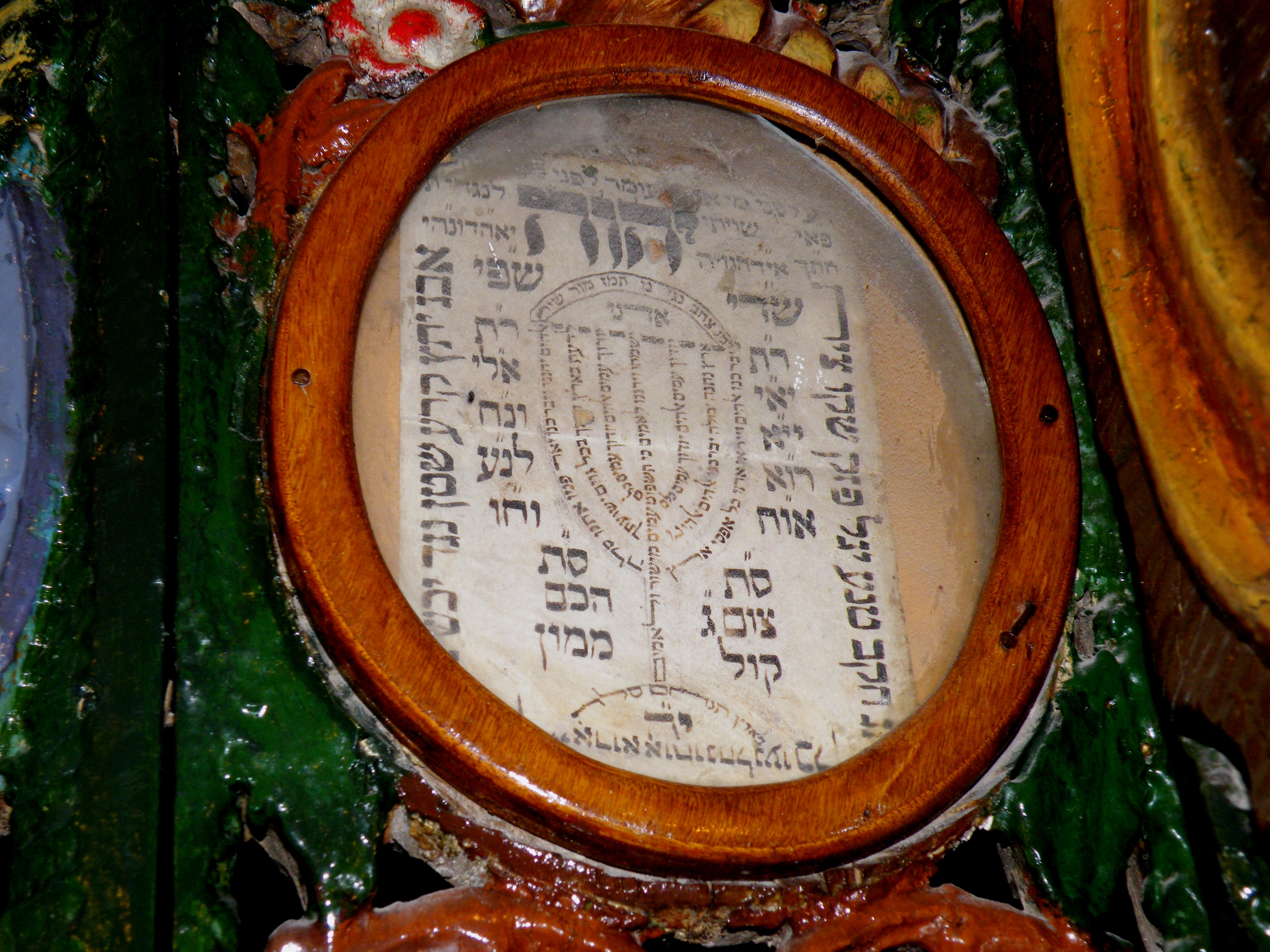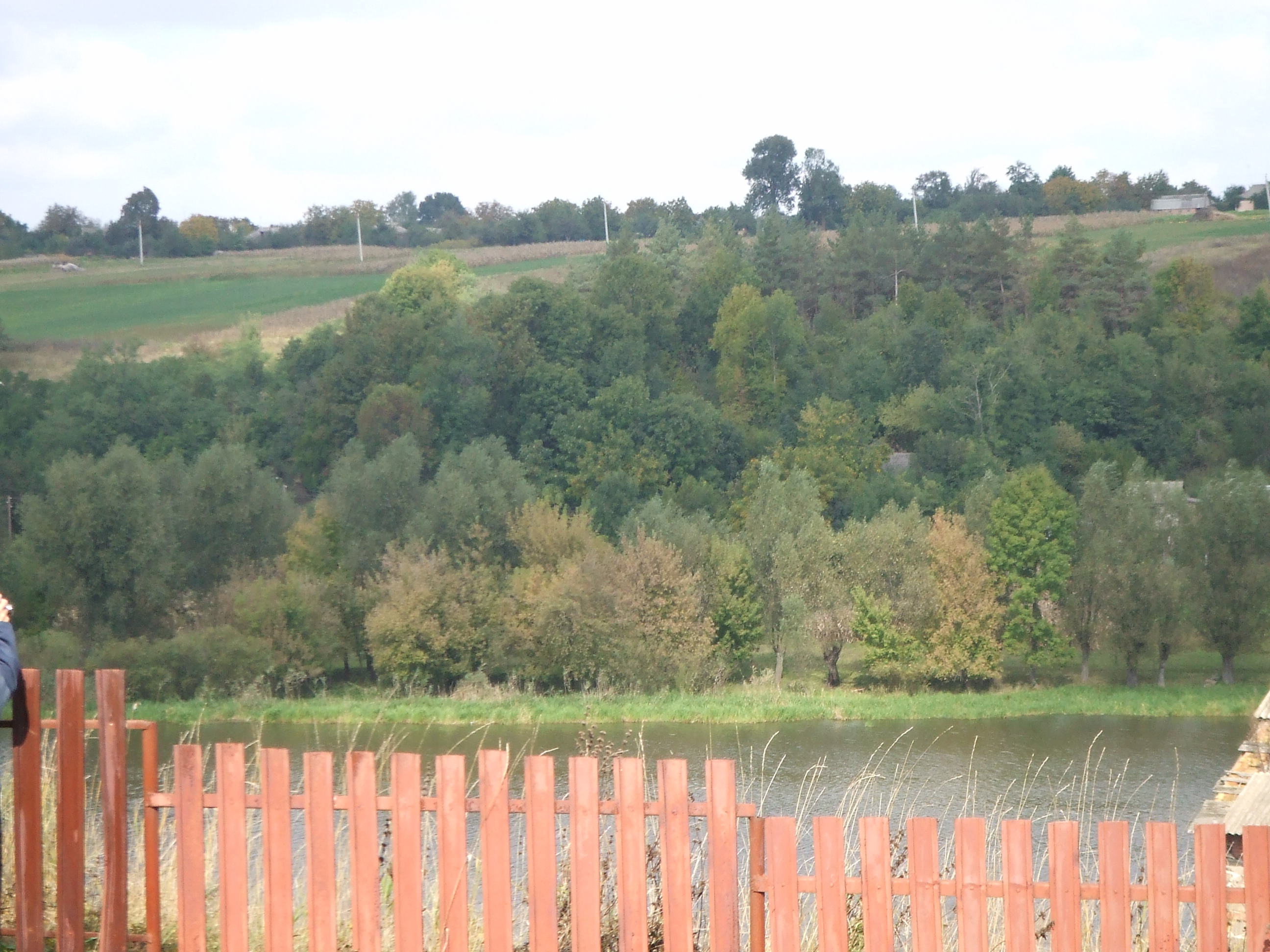|
Hitbodedut
Hitbodedut or hisbodedus ( he, הִתְבּוֹדְדוּת, lit. "seclusion, solitariness, solitude"; Tiberian: ''hīṯbōḏăḏūṯ'' , Ashkenazi: ''hīsboydedēs/hīsboydedūs'' or ''hīsbōdedūs'', Sephardi: ''hitbōdedūt'') refers to practices of self-secluded Jewish meditation. The term was popularized by Rebbe Nachman of Breslov (1772–1810) to refer to an unstructured, spontaneous and individualized form of prayer and meditation through which one would establish a close, personal relationship with God and ultimately see the Divinity inherent in all being. Background Secluded meditation practices were encouraged by many medieval rabbis, such as Abraham Maimonides, Abraham Abulafia, Joseph Gikatilla, Moses de Leon, Moses Cordovero, Isaac Luria, and Chaim Vital. The founder of Hasidism, the Baal Shem Tov, encouraged his close disciples to find deveikus through ''hitbodedut and'' by meditating on the kabbalistic unifications (''yichudim'') of Isaac Luria. Rebbe N ... [...More Info...] [...Related Items...] OR: [Wikipedia] [Google] [Baidu] |
Jewish Meditation
Jewish meditation includes practices of settling the mind, introspection, visualization, emotional insight, contemplation of divine names, or concentration on philosophical, ethical or mystical ideas. Meditation may accompany unstructured, personal Jewish prayer, may be part of structured Jewish services, or may be separate from prayer practices. Jewish mystics have viewed meditation as leading to ''devekut'' (cleaving to God). Hebrew terms for meditation include ''hitbodedut'' (or ''hisbodedus,'' literally "self-seclusion") or ''hitbonenut/hisbonenus'' ("contemplation"). Through the centuries, meditation practices have been developed in many movements, including among Maimonideans (Moses Maimonides and Abraham Maimonides), Kabbalists (Abraham Abulafia, Isaac the Blind, Azriel of Gerona, Moses Cordovero, Yosef Karo and Isaac Luria), Hasidic rabbis (Baal Shem Tov, Schneur Zalman of Liadi and Nachman of Breslov), Musar movement rabbis (Israel Salanter and Simcha Zissel Ziv), Conse ... [...More Info...] [...Related Items...] OR: [Wikipedia] [Google] [Baidu] |
Nachman Of Breslov
Nachman of Breslov ( he, רַבִּי נַחְמָן מִבְּרֶסְלֶב ''Rabbī'' ''Naḥmān mīBreslev''), also known as Reb Nachman of Bratslav, Reb Nachman Breslover ( yi, רבי נחמן ברעסלאווער ''Rebe Nakhmen Breslover''), and Nachman from Uman (April 4, 1772 – October 16, 1810), was the founder of the Breslov Hasidic movement. Reb Nachman, a great-grandson of the Baal Shem Tov, revived the Hasidic movement by combining the esoteric secrets of Judaism (the Kabbalah) with in-depth Torah scholarship. He attracted thousands of followers during his lifetime, and his influence continues today through many Hasidic movements such as Breslov Hasidism. Reb Nachman's religious philosophy revolved around closeness to God and speaking to God in normal conversation "as you would with a best friend". The concept of ''hitbodedut'' is central to his thinking. Biography Reb Nachman was born on April 4, 1772 (Rosh Chodesh of Nisan) in the town of Międzybóż, which ... [...More Info...] [...Related Items...] OR: [Wikipedia] [Google] [Baidu] |
Meditation
Meditation is a practice in which an individual uses a technique – such as mindfulness, or focusing the mind on a particular object, thought, or activity – to train attention and awareness, and achieve a mentally clear and emotionally calm and stable state. Meditation is practiced in numerous religious traditions. The earliest records of meditation (''dhyana'') are found in the Upanishads, and meditation plays a salient role in the contemplative repertoire of Jainism, Buddhism and Hinduism. Since the 19th century, Asian meditative techniques have spread to other cultures where they have also found application in non-spiritual contexts, such as business and health. Meditation may significantly reduce stress, anxiety, depression, and pain, and enhance peace, perception, self-concept, and well-being. Research is ongoing to better understand the effects of meditation on health (psychology, psychological, neurology, neurological, and cardiovascular) and other areas. Etymol ... [...More Info...] [...Related Items...] OR: [Wikipedia] [Google] [Baidu] |
Devekut
Devekut, debekuth, deveikuth or deveikus ( Heb. דבקות; Mod. Heb. "dedication", traditionally "clinging on" to God) is a Jewish concept referring to closeness to God. It may refer to a deep, trance-like meditative state attained during Jewish prayer, Torah study, or when performing the 613 mitzvot (the "commandments"). It is particularly associated with the Jewish mystical tradition. Etymology דבק, or ''deveq'', the modern Hebrew word for glue, literally means 'to cling'. It is sometimes referred to as ''devequt'', "dvequt" or ''devequs''. The concept of Devequt is important in Jewish culture, particularly in Hasidism and in the history of Jewish thought, mysticism, and ethics. In modern Israeli Hebrew, "Devequt" or "dvequt" is also often a synonym for dedication toward a particular goal. In religious Judaism and in academia, "Dvequt" refers most commonly to the philosophical, mystical and Hasidic understanding of "Devequt" as "cleaving" or "attaching oneself" to God i ... [...More Info...] [...Related Items...] OR: [Wikipedia] [Google] [Baidu] |
Sancta Sanctorum
The Sancta Sanctorum ( it, Chiesa di San Lorenzo in Palatio ad Sancta Sanctorum) is a Roman Catholic chapel entered via the ''Scala Sancta'' (Holy Staircase) of the Lateran Palace in Rome. It was the original private chapel of the papacy before it moved to Avignon, and later to the Vatican Palace. The chapel is the only building from the old Lateran Palace that was not destroyed during its reconstruction. Name The chapel acquired the ''Sancta Sanctorum'' sometime in the ninth century. The spelling is ''Sancta'', the neuter plural form of the Latin adjective "holy": this is a reference to the multiple relics preserved there (i.e. "the most holy things") and to the Holy of Holies in Jerusalem, traditionally called in Latin both ''sanctum sanctorum'' (the singular form) or ''sancta sanctorum''. History The founder of the chapel is unknown. It was originally dedicated to Saint Lawrence, and served as the pope's private oratory until the Renaissance. It is located at the top of the ... [...More Info...] [...Related Items...] OR: [Wikipedia] [Google] [Baidu] |
Shemini Atzeret
Shemini Atzeret (—"Eighth [day of] Assembly") is a Jewish holidays, Jewish holiday. It is celebrated on the 22nd day of the Hebrew calendar, Hebrew month of Tishrei in the Land of Israel, and on the 22nd and 23rd outside the Land, usually coinciding with late September or early October. It directly follows the Jewish festival of Sukkot which is celebrated for ''seven'' days, and thus Shemini Atzeret is literally the ''eighth'' day. It is a separate—yet connected—holy day devoted to the spiritual aspects of the festival of Sukkot. Part of its duality as a holy day is that it is simultaneously considered to be both connected to Sukkot and also a separate festival in its own right. Outside the Land of Israel, this is further complicated by the Yom tov sheni shel galuyot, additional day added to all Biblical holidays except Rosh Hashanah and Yom Kippur.Talmud, ''Beitza'' 4b. The first day of Shemini Atzeret therefore coincides with the eighth day of Sukkot outside the Land of ... [...More Info...] [...Related Items...] OR: [Wikipedia] [Google] [Baidu] |
Tzadik
Tzadik ( he, צַדִּיק , "righteous ne, also ''zadik'', ''ṣaddîq'' or ''sadiq''; pl. ''tzadikim'' ''ṣadiqim'') is a title in Judaism given to people considered righteous, such as biblical figures and later spiritual masters. The root of the word ''ṣadiq'', is '' ṣ- d- q'' ( ''tsedek''), which means "justice" or "righteousness". When applied to a righteous woman, the term is inflected as ''tzadika/tzaddikot''. ''Tzadik'' is also the root of the word ''tzedakah'' ('charity', literally 'righteousness'). The term ''tzadik'' "righteous", and its associated meanings, developed in rabbinic thought from its Talmudic contrast with ''hasid'' ("pious" honorific), to its exploration in ethical literature, and its esoteric spiritualisation in Kabbalah. Since the late 17th century, in Hasidic Judaism, the institution of the mystical tzadik as a divine channel assumed central importance, combining popularization of (hands-on) Jewish mysticism with social movement for th ... [...More Info...] [...Related Items...] OR: [Wikipedia] [Google] [Baidu] |
Reb Naftalí
Common meanings * Johnny Reb, personification of a Confederate soldier in the American Civil War * Reb (Yiddish), an honorific title for a teacher People * Reb Anderson (born 1943), American Zen Buddhist teacher and writer * Reb Beach (born 1963), American rock guitarist * Reb Brown (born 1948), American actor * Reb Russell (1889-1975), American Major League Baseball pitcher * Reb Spikes (1888-1982), American jazz saxophonist and entrepreneur * Lafayette Russell, American football player and actor * REB, web handle of Columbine massacre shooter Eric Harris Food chemistry * Rebaudioside compounds from the stevia plant, used as sweeteners REB * Relativistic electron beam, streams of electrons moving at relativistic speeds * Revised English Bible, a 1989 English language translation of the Bible * Research ethics board, or institutional review board, type of committee that applies research ethics * Rural Electrification Board, in Bangladesh - see Electricity distribution companies by ... [...More Info...] [...Related Items...] OR: [Wikipedia] [Google] [Baidu] |
Judaism
Judaism ( he, ''Yahăḏūṯ'') is an Abrahamic, monotheistic, and ethnic religion comprising the collective religious, cultural, and legal tradition and civilization of the Jewish people. It has its roots as an organized religion in the Middle East during the Bronze Age. Modern Judaism evolved from Yahwism, the religion of ancient Israel and Judah, by the late 6th century BCE, and is thus considered to be one of the oldest monotheistic religions. Judaism is considered by religious Jews to be the expression of the covenant that God established with the Israelites, their ancestors. It encompasses a wide body of texts, practices, theological positions, and forms of organization. The Torah, as it is commonly understood by Jews, is part of the larger text known as the ''Tanakh''. The ''Tanakh'' is also known to secular scholars of religion as the Hebrew Bible, and to Christians as the " Old Testament". The Torah's supplemental oral tradition is represented by later texts s ... [...More Info...] [...Related Items...] OR: [Wikipedia] [Google] [Baidu] |
Teshuvah
Repentance ( he, תשובה, literally, "return", pronounced ''tshuva'' or ''teshuva'') is one element of atoning for sin in Judaism. Judaism recognizes that everybody sins on occasion, but that people can stop or minimize those occasions in the future by repenting for past transgressions. Thus, the primary purpose of repentance in Judaism is ethical self transformation.Telushkin, Joseph. ''A Code of Jewish Ethics: Volume 1 - You Shall Be Holy''. New York: Bell Tower, 2006. p. 152-173. A Jewish penitent is traditionally known as a ''baal teshuva''. A ''baal teshuva'' is even more revered in the Jewish tradition than a tzadik, righteous person. Repentance and creation According to the Talmud, God created repentance before He created the physical universe, making it among the first things created. ('' Nedarim'' 39b). Scherman, Nosson. "An Overview - Day of Atonement and Purity." An Overview. ''The Complete ArtScroll Machzor: Yom Kippur''. By Scherman. Trans. Scherman. Brooklyn, ... [...More Info...] [...Related Items...] OR: [Wikipedia] [Google] [Baidu] |
David
David (; , "beloved one") (traditional spelling), , ''Dāwūd''; grc-koi, Δαυΐδ, Dauíd; la, Davidus, David; gez , ዳዊት, ''Dawit''; xcl, Դաւիթ, ''Dawitʿ''; cu, Давíдъ, ''Davidŭ''; possibly meaning "beloved one". was, according to the Hebrew Bible, the third king of the United Kingdom of Israel. In the Books of Samuel, he is described as a young shepherd and harpist who gains fame by slaying Goliath, a champion of the Philistines, in southern Canaan. David becomes a favourite of Saul, the first king of Israel; he also forges a notably close friendship with Jonathan, a son of Saul. However, under the paranoia that David is seeking to usurp the throne, Saul attempts to kill David, forcing the latter to go into hiding and effectively operate as a fugitive for several years. After Saul and Jonathan are both killed in battle against the Philistines, a 30-year-old David is anointed king over all of Israel and Judah. Following his rise to power, David ... [...More Info...] [...Related Items...] OR: [Wikipedia] [Google] [Baidu] |







